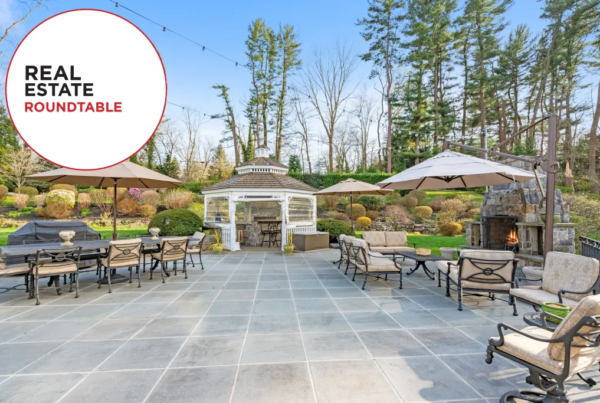Check out the Lee Brothers’ Guide to the North Fork!
http://www.travelandleisure.com/articles/lee-brothers-guide-to-north-fork-long-island#
By Matt and Ted Lee:
The windswept North Fork, a 30-mile-long finger of farmland between Long Island Sound and the bays that separate it from the South Fork, has two main spines of blacktop. The northern route is a highway through potato fields and vineyards. The two-lane southern road, by contrast, meanders through the farm villages of Cutchogue and Southold, and is further slowed by the fact that it just may have more farm stands per square mile than any place on earth. Roadside signage often takes the form of a ladder of hand-painted tags—tomatoes, melons, ducks, fresh eggs—hanging one from another, and at the peak of summer a single farm might offer 20 different items. To read them all, drivers must slow down to a pace that infuriates anyone behind them—especially those keeping city time.
We’re the kind of guys who would, by habit, crawl to a stop at every such stand, scrutinizing the baby eggplants at Sang Lee Farms, sampling peaches at Wickham’s down the way. But on this clear, bright summer day we were running late for a reservation at Noah’s. We’d heard from friends with a summer place in Cutchogue that the restaurant does excellent work with the region’s fish and shellfish and functions as a crucible for a newly energized food community of bankers turned poultry farmers, firebrand organic winemakers, and upstart purveyors of artisanal ice cream. They all channel the Slow Food ethics that have made the North Fork one of the most compelling dining destinations within reach of New York City.
Before dinner, we made a quick detour to check in at the Silver Sands, a no-frills but tidy motel-with-cabins near the town of Greenport that harks back to a golden age of Long Island summering: a neon marquee from the 1960’s, a framed needlepoint Welcome sign at the front desk, and a crescent of beach hugging a cove where you could imagine whiling away a weekend or a lifetime.
After dropping off our bags and taking a perfunctory dip in the water, we hustled to Greenport, the maritime village that’s the commercial center of the North Fork, and to Noah’s. The terrace was packed; the lofty dining room buzzing with a crowd of regulars. A table of ladies with silvery coifs cooed over their waiter (who happened to be the grandson of one of them) while a weekending family, toddlers in tow, feasted on crab tacos and Gorgonzola-and-rosemary fries. We took our seats at the bar and in short order had glasses of crisp Chenin Blanc from Paumanok, a winery we’d passed not 20 minutes ago, and an iced platter of local oysters: Hogs Neck, Blue Point, and the alluringly named Pipes Cove.
“Where’s Pipes Cove?” we asked the bartender.
“Know where the Sands Motel is?” she said. “Right out front.”
The following morning, the innkeeper confirmed it: his cousin’s oyster beds are just beyond the motel’s swimming area.
“Sometimes you get a stray from the pens,” he said. “You can feel them with your toes.”
You’d be hard-pressed to find a more instantly immersive foodscape than the North Fork in summertime. Being a locavore is less an identity here than a fact of existence on a peninsula where so much of the land is given over to growing food and where the waters yield such astonishingly large amounts of fresh fish and shellfish. For more than 200 years, the region has been a breadbasket for New York City, and you see it everywhere, written into the very geography: the neighboring villages of Orient and East Marion were known as “Oysterponds” in the 19th century.
While the North Fork and nearby Shelter Island have been summer communities for New York City families since the Victorian era, and a nascent wine-making industry has more recently attracted travelers and new residents, we were drawn here because the area’s agricultural and maritime traditions have preserved it from becoming an extension of the South Fork, so easily lampooned in the catfights that can break out over a parking space. Or worse, from suffering the fate of Montauk, where the influx of a well-heeled creative class, limited-edition Marc Jacobs surfboards under their arms, has turned the barefoot-beachy idyll into a hipster cliché seemingly overnight. The North Fork is still a fedora-free zone, where artists mix it up with oystermen and bikers with blue bloods; the most coveted item of jewelry is a sailor’s-knot bracelet.
On our way back to Greenport, we pulled off the main road when we passed a sign for Oysterponds Farm, with hand-drawn illustrations advertising blueberries, red raspberries, and yellow raspberries. But we found no raspberries on display, only pint after pint of plump blueberries.
“Is raspberry season over?” we asked the older gentleman minding the stand.
“Heavens, no,” he said. “We had plenty this morning—yellow and red—but we’re all out now. If you had’na slept in.…”
After we bought some blueberries, he elaborated: typically, the pickers might head out for another harvest pass if they ran out, but the fields today were already too hot for the health of the workers.
The North Fork undeniably moves to the rhythm of farm life, and there’s a wry resistance to the vicissitudes of Mother Nature and the control she exerts. The climate here is capricious, from day to day—and year upon year. Which means wine making on the North Fork is for only the bravest. If American appellations like Napa and Sonoma tend to romanticize the pleasures of wine making, Long Island emphatically does not. No, sir. These folks are honest, and if you ever thought owning a winery might be an amusing, laird-of-the-manor retirement pursuit, we’d suggest you sign up for the weekly wine newsletter David Page sends out from his Shinn Estate Vineyards and become acquainted with every pest, every mold spore, and the nail-biting realities: behind each sun-washed day in Mattituck might be a morning of gale-force winds and pelting hail.
Once you’ve read about the battles Page faces every day to make the vineyards sustainable, as we did, you’ll be inclined to visit the vineyard to see for yourself. At seven o’clock on a Friday evening, the tasting terrace was at full tilt, and a clutch of bridesmaids were drinking rosé and getting their palms read by the in-house psychic. We tasted glasses of the winery’s exuberant Coalescence, a spicy and suave blend of Chardonnay, Sauvignon Blanc, and Riesling, watching the setting sun cast the clouds pinker and pinker still in a bright blue bowl of sky.
We were tempted to linger late into the evening, but dinner at the North Fork Table & Inn beckoned. Here, we found the early riser who’d cleaned Oysterponds out of their berries. It was Claudia Fleming, who is the dean of the new North Fork dining scene along with her husband, Gerry Hayden, a Long Island native. Seasoned Manhattan veterans (she was pastry chef at Gramercy Tavern during Tom Colicchio’s heyday; he was sous-chef at Charlie Palmer’s Aureole), they decamped for Southold in 2006 and freshened up an old inn and tavern into an elegant restaurant with rooms. The cooking is seasonal and focused: a meaty Long Island duck breast with perfect crisped fat and buttery chanterelles; a Block Island fluke crudo with ruby grapefruit. The stunner of the night was the summer berry meringue sandwich—tart red-raspberry ice cream sandwiched between two crisp meringue cookies and surrounded by those Oysterponds red and yellow raspberries, so sweet and floral, as delicate as jasmine. We were grateful we hadn’t missed them.
If one of the joys of the North Fork is celebrating its being the “Un-Hamptons,” another side of the quiet community’s life is looking out for signs that it might be getting “too crowded,” “too social,” or “too flashy.” Shopkeepers and waiters in Greenport roll their eyes and shrug when tourists ask if they know who owns the enormous yachts and speedboats that occasionally dock at the city marina. A friend who recently bought a house in the sleepy, easternmost village of Orient warily told us the local general store had been bought by twentysomethings from the Berkshires and that the scene there could get a little “intense.”
When we went to check it out, however, things were decidedly low-key. One owner, Grayson Murphy, was noodling around on a guitar on the front porch. His wife, Miriam Foster, was inside, having just pulled a sheet of freshly baked chocolate chip cookies from the oven. We bagged up a few, then popped next door to the Idle Hour, an ice cream shop run by the precocious 20-year-old Rosy Brown. If you’re trying to escape city life, finding out that Brown is the daughter of prominent Manhattan art dealer Gavin Brown might be too close for comfort (the i scream T-shirts she sells are by Argentine art star Rirkrit Tiravanija). But then she’s grown up in both worlds and, as such, caters to both, offering two brands of ice cream: the Brooklyn cult label Blue Marble for the yoga-mat-toting city folk, and Hershey’s for the rest of us. We ordered Hershey’s vanilla sundaes with house-made caramel sauce, perched ourselves on a bench on the front porch of the shop, crumbled our chocolate chip cookies over the top, and finished our sundaes before a single car passed by.
West of Orient, Greenport gets the lion’s share of the tourist throngs most summer weekends with ferry traffic from Shelter Island and visitors from New York City. But even on its busiest days, the town retains a down-home anticommercial feel in keeping with the spirit of the farm villages of Cutchogue and Southold to the west, with their honor-jar vegetable concessions and hand-lettered signs. There’s a well-stocked marine-supply store and an antiques shop selling authentic regional finds: weathered burlap potato sacks printed with the names of bygone North Fork farms and clam rakes that have seen dozens of seasons of service.
And then there’s Aldo’s. Several years ago, North Fork denizens drew a collective, horrified gasp when a Starbucks opened in Greenport near Aldo’s, a coffee shop presided over by the mercurial, curmudgeonly Aldo Maiorana, a Sicilian roaster-barista with a mad-scientist halo of silver curls who’s been pulling espresso in the area for almost 30 years. Maiorana responded by moving his operation directly across the street from the Starbucks, which only seemed to raise the stakes; after all, as many people as there are who love Aldo’s coffee, there are an equal number who find it bitter (although few seem to quibble about the buttery-crisp scones). And as generations of local teenagers who have been employed at Aldo’s can attest, Maiorana’s demeanor has proved no less divisive. He reduced a friend of ours to tears with a lecture on the correct way to sweep a floor when she worked for him in the nineties.
But this is the North Fork. Five years on, the Starbucks has closed. And whenever the Italian-tricolore “Open” flag waves at Aldo’s, the scent of warm scones hovers over a slow-moving line of customers stretching from the espresso machine to the front door. Outside, a bitterly aromatic fog of roasting coffee beans wafts over the town green.
Down on the docks, the Greenport restaurant scene is dominated by Claudio’s, a small empire with a 143-year history. The flagship, Claudio’s, with its acres of mahogany and marble and old-school service, appeals to a more traditional, graying crowd. Outdoors are the two livelier establishments in the chain, each separated by a channel. Crabby Jerry’s, a pick-up window for steamed lobsters and clam rolls, is on one dock, and on another is Claudio’s Clam Bar, the clear crowd favorite, attracting motorcycle and car clubs looking for sustenance on their Sunday drives. When we arrived at opening time, at 11:30 a.m. on the dot, a Harley Motorcycle Club and a Dodge Viper Car Club had already turned the parking lot into an impromptu show of gawkers.
Out under the tent on the dock is the pulse of the Clam Bar scene: the raucous car clubs, round tables of families, and couples tucking in to bowls of steamed clams in white wine and methodically breaking down lobsters from Crabby Jerry’s. Shortly after being seated, we heard the throaty growl of a speedboat drifting ever so slowly into the narrow channel, its pilot chomping a cigar, deeply concentrating on berthing the boat alongside the dock of the Clam Bar. Minutes later, another. And then another. Our waitress explained that this was the drill every weekend, the ballet of cigarette boats tying up three deep in the channel.
We ate light—a quick platter of clams on the half shell washed down with ice-cold Roanoke rosé—because we were meeting friends at a restaurant that had just opened a few docks west of where we were. They said the owner of the well-regarded Vine Street Café, on Shelter Island, had taken over the local chowder dive and remade it into Blue Canoe Oyster Bar & Grill. So we walked across the harborfront to find our dining companions—with a stop to gawk at the Milk & Honey, a 125-foot yacht moored at the city dock, its crew in matching polos and shorts hustling around the boat.
A whitewashed post-and-beam tavern room with a plummy nautical décor, the Blue Canoe has a generous terrace overlooking a boardwalk linking the less-trafficked part of the harborfront east of the Shelter Island Ferry dock to the town green. The matching orange umbrellas and boatsman’s livery of the waitstaff brought to mind the outdoor lounges of Miami or St. Bart’s. A smart, summery menu of lobster rolls, with a great raw bar sourced locally, had the resolutely new-school inflections of a globe-trotting chef: tuna tataki; chimichurri mayo; chili-lime shrimp.
In the strip of beach just beyond the terrace, a small seaplane was casually tied up, and the diners and pedestrians on the boardwalk were doing their best to appear nonchalant. At least until the passengers, a party of four sitting a few tables away, got up to leave and walked toward the beach. They stepped gingerly onto the pontoons and up into the cockpit one by one. And when they were all in, the pilot fired up the engine, the propeller’s backdraft causing the plantings around the boardwalk to shudder, and they puttered out toward the boat traffic in the harbor.
We lost sight of the plane as it angled out around a dock, and turned back to our bluefish tacos and pulled-pork sandwiches. But a minute later, people walking along the harborfront began moving toward the docks to watch the plane take off. We wondered aloud at the table whether Blue Canoe could become competition for Sunset Beach, just across the water on Shelter Island, where seaplanes and yachts anchor just offshore. While it’s too early to tell, it did seem in that instant as the plane lofted above the harbor and all eyes—waitstaff; diners; the crew on the deck of the Milk & Honey—watched the plane soar above the harbor, arcing up and away and finally out of sight, that we were witnessing the dawning of a new era in this old maritime village.
Source: Seen on Travel & Leisure: Written by Matt Lee and Ted Lee









